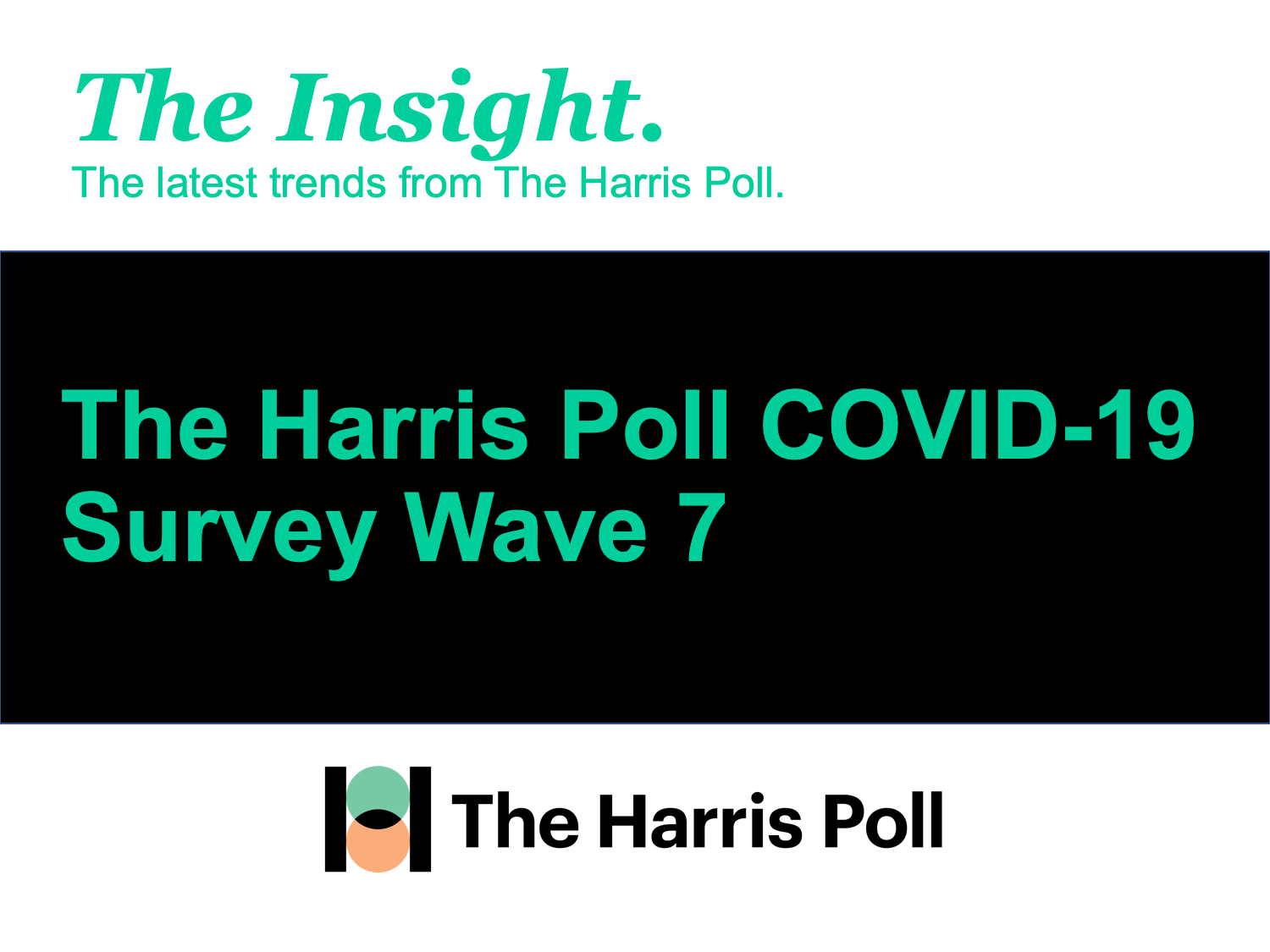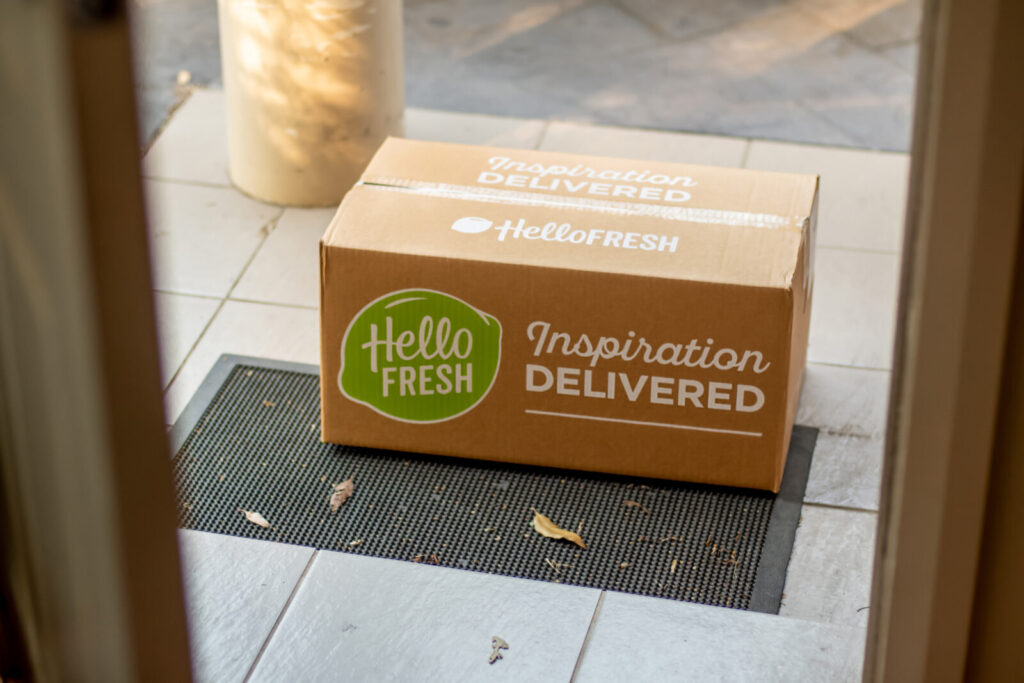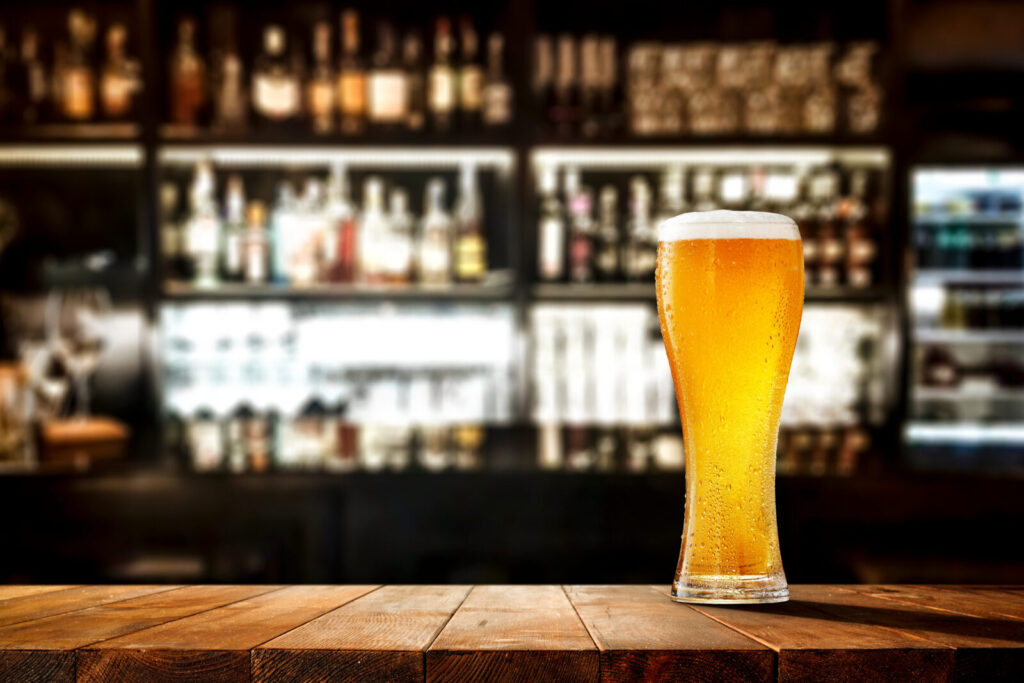Brief • 4 min Read

Good morning. In Wave 7 of The Harris Poll COVID-19 Tracker fielded April 11-13, 2020, all attention shifts from abject fear to restarting the economy, safely. Both in households and in businesses, fundamental assumptions are being re-thought about daily living. And if the worst is indeed behind us, Americans remain wary of going back to life as it was before. Contactless service, hygienic sourcing and at safe distance experiences are just a small part of the new not-so-normal economy.
Based on these themes, our team has curated key insights to help you navigate the coronavirus. Full survey results and business implications can be found at The Harris Poll COVID-19 Portal. We will continue to actively field and provide insights on a regular cadence to keep you informed of the shifts in sentiment and behaviors as the news and guidelines evolve.
The Threshold to Normalcy
This is supposed to be the week where we’ll see the curve flatten. Yet for most Americans, it will take a vaccine to make them comfortable:
- 62% say a vaccine would be necessary to resume normal activities like flying, going to the gym, sporting events, etc.
- Barring that, 53% say extreme cleaning of facilities;48% C19 testing given to everyone; 37% mandatory masks for workers and patrons; 35% mandatory spacing out of seating; 34% occupancy limits; 25% thermal testing.
- In our WSJ survey on privacy, Americans overwhelmingly support mandatory screenings, location data sharing and patient registries.
- Also, Americans caution against easing off restrictions too soon: Over 8 in 10 (84%) are concerned this will cause a surge in coronavirus cases while nearly three quarters (74%) say the number of cases should have to go down before Americans can return to work; (67%) say a proper testing place.
- Yet as we told Politico, 51% of Americans say we should stay away from work for another month; but 34% are claustrophobic at home.
Takeaway: Just as after 9-11, Americans will need to feel safe doing “normal” activity again. Expect growing impatience to speed up normalization. But it’s clear we are rethinking what is normal moving forward, and maybe that is a good thing.
What Does a Near-Normal Look Like?
We expect public PPE, social distancing enforceable by law and mobile tracking to go mainstream as states look to slowly re-open the economy:
- Nearly 7 in 10 (67%) Americans say people should be mandated to wear masks if they go out in public; and 64% say those who don’t comply should face fines, if masks are mandated.
- Roughly the same number (72%) think businesses should have the right to refuse service if a customer is not wearing a face mask.
- And Americans support fining people who disobey social distancing restrictions, such as (65%) going to a public area that is closed (e.g., parks, beaches); 64% congregating with more than 10 people.
- 9-in 10 Americans consider social distancing compliance a ‘patriotic duty’.
Takeaway: As anxiety gives way to economics, in absence of testing, social distancing is the only defense Americans have to move forward. This means if you’re a restaurant, you need to re-think your space; If you’re a Hollywood studio you need to re-think your sets and production. Everything must be done to assure customer and employee health. This is the new value exchange in business.
Everyone Has a Supply Chain Problem
You’ve read that farmers are dumping their crops, even while lines at food banks grow. Well, new sourcing challenges are hitting every corner of the economy. Case in point: Our Wall Street Journal Harris Poll found that Americans are loading up on streaming services. Let’s take a look at this industry in-depth:
- Parents with children at home are spending $60 a month for streaming subscriptions —well above the general population—and have 3.8 services vs 1.7 for households with no children; 30% bought a new Netflix subscription in March (49% with children vs. 18% without).
- And 56% of Americans are watching 2 to 4 more hours daily. A fifth of homes with kids are watching more than four additional hours of streaming content a day.
- Hollywood has a looming content supply chain problem: As movie theatres, sports and theme parks are shut down, streaming will draw down inventory and if there are no new originals, subscribers will deplete each service, creating a share war.
- Services with deep libraries of older programming like Disney+ and Amazon Prime will be on stronger footing.
- Animation is king: Animators can work from home; actors can do v/o remotely too.
- Studios will avoid bidding wars for hot titles, choosing more small scale fast/easy to produce programs instead; Sets will need to become more agile, smaller and re-thought to navigate future shutdowns.
Takeaway: You need to war-game your business from every angle and redeploy investments for at least two phases; pre and post vaccine.
Read more in our latest article with the Wall Street Journal.
Life In Quarantine: Vices and Gratitude
As we told the NY Post today, life in quarantine means every day is kind of like Super Bowl Sunday:
- About 40% of people say they’ve been eating more snack foods since the outbreak began with 26% admitting they’re finding comfort in chocolate; 25% drinking more soda and 20% are consuming more alcohol (millennials/Gen-Z 30%).
- With restaurants closed and grocery delivery supply chains slowed; A quarter of GenZ/Millennials (26%) and a fifth of Men (20%) are pivoting towards fast food vs 17% of gen pop
- Yet it’s not all bad: Two-thirds of Americans are taking extra time to make more home cooked meals (68%), especially adults ages 35-49, and To eat more fresh food (42%), especially adults 18-34 and higher income households.
- Half of parents are giving in to more screen time (50%), treats (39%) and buying more toys (30%) to preoccupy their kids… and half of the workforce is working in their PJ’s (49%) and feeling more productive (53%) now than at the office.
Takeaway: As tensions rise with nowhere to go, a little indulgence is en vogue as a means of emotional reassurance; Companies should think how they can help the public find the balance they so desperately need.
Think Like a Crash Test Dummy…
Preparing for life PC19, (post covid19) Americans are coming to terms with saying goodbye to some of the things they miss the most about life before and replacing foundational parts of the American lifestyle with virtual, live streamed, in-home (aka safe) alternatives.
- 67% of Americans are now more likely to have a virtual happy hour with friends vs going to a bar (33%).
- Even though 46% miss attending sporting events, nearly three quarters (73%) are more likely to live stream sports at home vs attending live in person (27%.)
- While nearly 4 in 10 miss going to the gym/work out class (37%), a whopping 85% are more likely to exercise at home vs going back to their local gym (15%).
- Nearly 8 in 10 (79%) are more likely to watch a movie at home vs going to the movies (21%) even though over 4 in 10 miss going to the movie theatre (44%).
- But there are some aspects of life pre-COVID that the public wants to resume in person such as in-person doctor appointments (64%) over virtual (36%) and shopping in store for groceries (73%) vs ordering home delivery (27%).
Takeaway: Americans are adaptive and agile and some new habits will take root out of the crisis. But Americans are also social creatures who are growing weary of being homebodies. The businesses that will win must provide high quality/safe passage. In that way, every company needs to think like an insurance company. Trust now means peace of mind.
Americans Turn Focus to Saving Local Economies
As local leadership rises in trust over the Federal Government (78% vs 54%), Americans are also looking to revitalize their local economy. New data shows they are more favorable and forgiving towards small businesses and brick and mortar who are struggling the most.
- More than 2 in 5 Americans have a more positive view of small businesses (45%) and restaurants (41%) since the start of the coronavirus pandemic
- Forgiving Businesses Who Can’t Pay Rent: 76% say retailers should be allowed to postpone rent payments if they cannot afford it due to the coronavirus, even if they remain open for business
- Favoring Local Manufacturing: 82% say their opinion of a company would improve if the company promises to relocate their manufacturing away from China and back to the United States.
- Small businesses tell the Harris Poll they are struggling, but 67% of small business owners feel a responsibility to their community and 60% of small business owners feel supported by their community. Read our special Cv19 small business report.
Takeaway: Americans are turning their attention to their communities, meaning companies that work to support local economies will prosper and also be forgiven for hardships: in fact it might even work in your favor, 55% say their opinion would improve of companies harmed by the crisis asking for a bailout from the federal government.
Taxpayers to Uncle Sam: Show Me The Money!
Although almost nine in ten Americans (88%) are aware that the deadline to file taxes has been extended due to COVID-19, nearly 3 in 5 Americans (57%) say they will not be taking advantage of the later filing. One can surmise that most Americans are expecting a refund and right now, cash flow is on par with Purell. In a crisis, cash is king:
- More than half of Americans (55%) are concerned that they may lose their job due to the coronavirus outbreak. Nearly 2 in 5 (41%) think their income will be lower in 2020.
- While a strong majority (61%) say they could live off their savings for 1-6 months, 40% could only live off of their savings for up to 3 months (13% could only live off of their savings for 1 month; 13% for 2 months; 14% for 3 months)
- More Americans think the economic impact will have a bigger impact on them vs the virus itself (65% vs 35%).
- And while (53%) say they are not withdrawing from their 401k early because of new rules/COVID-19, 38% are seeking out additional sources of income.
Takeaway: Cash-strapped Americans will be cautious investors, savvy deal-seekers and more inventive and attentive in managing their household budgets. Financing plans, discounting and compassionate brand messaging will separate the opportunists from those who build long term affinity as consumers struggle to get back on their feet.
Subscribe for more Insights
Subscribe to our newsletter for the latest trends in business, politics, culture, and more.
Download the Data
This survey was fielded online among a nationally representative sample of 2,013 U.S adults from April 11-13, 2020.
Download
Subscribe for more Insights
Subscribe to our newsletter for the latest trends in business, politics, culture, and more.
Download the Data
This survey was fielded online among a nationally representative sample of 2,013 U.S adults from April 11-13, 2020.
DownloadRelated Content








